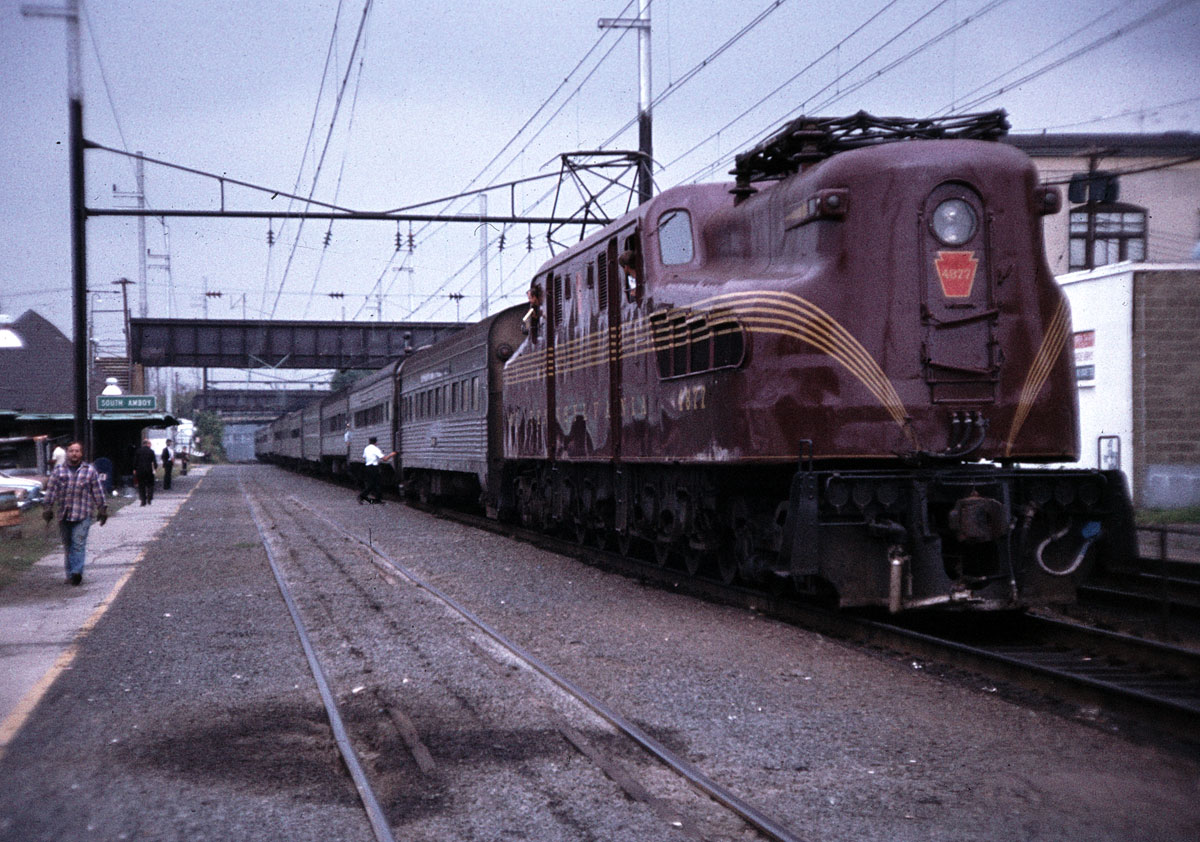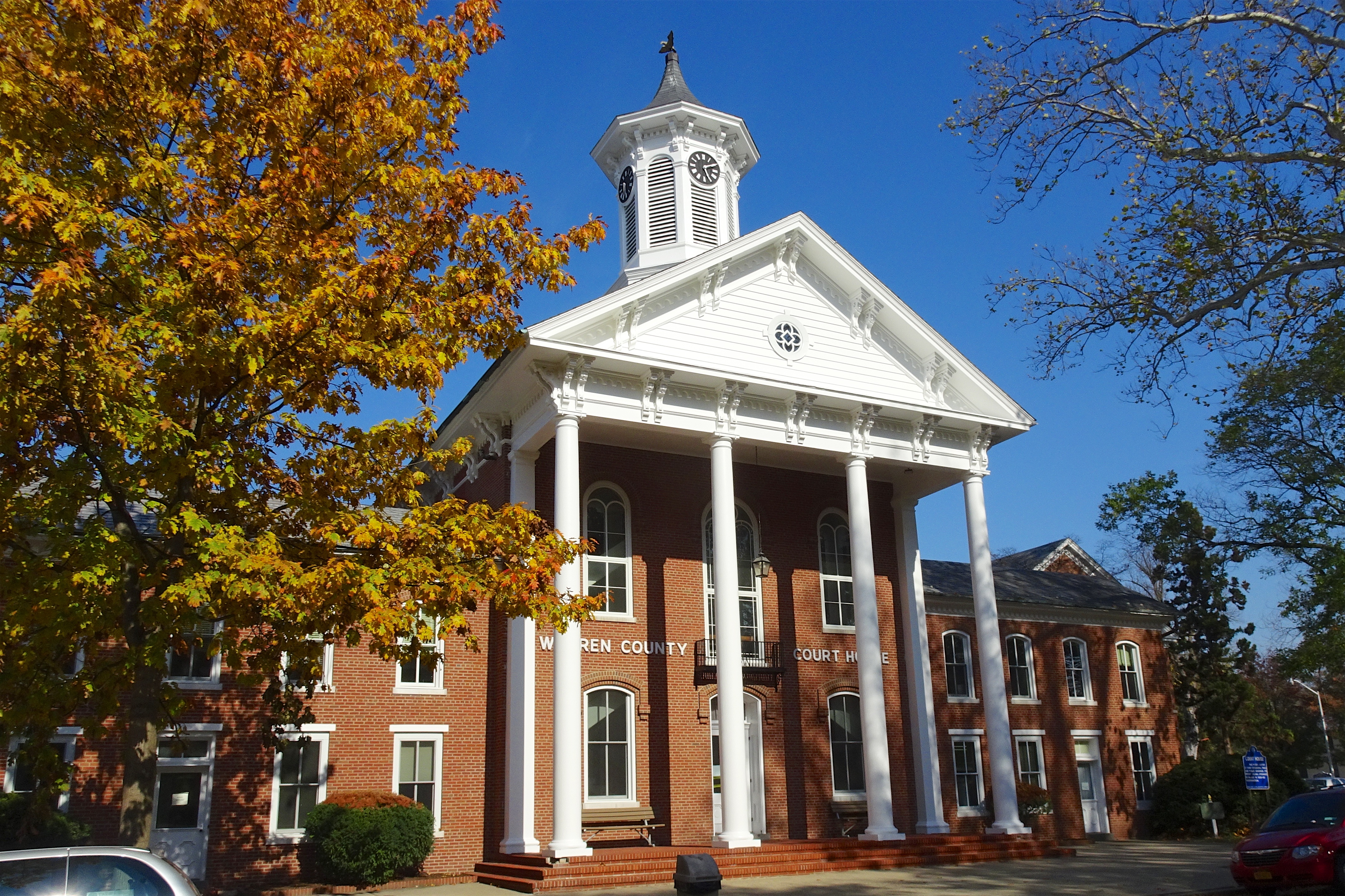|
Phillipsburg Union Station
Phillipsburg Union Station is an inactive railroad station in Phillipsburg, New Jersey, United States, at 178 South Main Street. Opened in 1914, Union Station was built by the Delaware, Lackawanna & Western Railroad (DL&W) and shared with the Central Railroad of New Jersey (CNJ) and was situated where the lines merged before the bridge crossing the Delaware River. Designed by Frank J. Nies, the architect who produced many of DL&W stations now listed state and federal registers of historic places, the 2 1/2 story, 3 bay brick building is unusual example of a union station and a representation of early 20th century Prairie style architecture. The Phillipsburg Union Signal Tower, or PU Tower, is nearby. History Situated at the confluence of the Delaware River and the Lehigh River, Phillipsburg has historically been a major transportation hub. From the 1820s to 1920s, it was the western terminus of the Morris Canal, which connected it by water eastward to the Port of New York and New ... [...More Info...] [...Related Items...] OR: [Wikipedia] [Google] [Baidu] |
Phillipsburg, New Jersey
Phillipsburg is a town located along the Delaware River in Warren County, in the U.S. state of New Jersey. It is located across the river directly east from Easton, Pennsylvania. Phillipsburg is the most populous municipality in Warren County with a population of 15,249 as of the 2020 census. The Norfolk Southern Railway's Lehigh Line, formerly the mainline of the Lehigh Valley Railroad with a mix of mainline trackage combined long leased to the Central Railroad of New Jersey by its builder Lehigh Coal & Navigation Company, runs through Phillipsburg on its way cross river to Easton, Pennsylvania. The Belvidere Delaware Railroad was leased in 1871 and later acquired by the Pennsylvania Railroad, connecting the lower Poconos to Trenton, New Jersey and Philadelphia. Phillipsburg is located northeast of Allentown, north of Philadelphia, and west of New York City. History The town grew from a sleepy agricultural village (in 1824), and was transformed into a transportation h ... [...More Info...] [...Related Items...] OR: [Wikipedia] [Google] [Baidu] |
Lehigh Valley Railroad
The Lehigh Valley Railroad was a railroad built in the Northeastern United States to haul anthracite coal from the Coal Region in Pennsylvania. The railroad was authorized on April 21, 1846 for freight and transportation of passengers, goods, wares, merchandise and minerals in Pennsylvania and the railroad was incorporated and established on September 20, 1847 as the Delaware, Lehigh, Schuylkill and Susquehanna Railroad Company. On January 7, 1853, the railroad's name was changed to Lehigh Valley Railroad. It was sometimes known as the Route of the Black Diamond, named after the anthracite it transported. At the time, anthracite was transported by boat down the Lehigh River. The railroad ended operations in 1976 and merged into Conrail along with several northeastern railroads that same year. The Lehigh Valley Railroad's original and primary route between Easton and Allentown was built in 1855. The line later expanded past Allentown to Lehigh Valley Terminal in Buffalo and pas ... [...More Info...] [...Related Items...] OR: [Wikipedia] [Google] [Baidu] |
NJ Transit
New Jersey Transit Corporation, branded as NJ Transit, and often shortened to NJT, is a state-owned public transportation system that serves the U.S. state of New Jersey, along with portions of New York State and Pennsylvania. It operates bus, light rail, and commuter rail services throughout the state, connecting to major commercial and employment centers both within the state and in the adjacent major cities of New York and Philadelphia. In , the system had a ridership of . Covering a service area of , NJT is the largest statewide public transit system and the third-largest provider of bus, rail, and light rail transit by ridership in the United States. NJT also acts as a purchasing agency for many private operators in the state; in particular, buses to serve routes not served by the transit agency. History NJT was founded on July 17, 1979, an offspring of the New Jersey Department of Transportation (NJDOT), mandated by the state government to address many then-pressi ... [...More Info...] [...Related Items...] OR: [Wikipedia] [Google] [Baidu] |
Raritan Valley Line
The Raritan Valley Line is a commuter rail service operated by New Jersey Transit (NJT) which serves passengers in municipalities in Union, Somerset, and Hunterdon counties in the Raritan Valley region in central New Jersey, United States. The line's most frequent western terminus is Raritan station in Raritan. Some weekday trains continue farther west and terminate at the High Bridge station, located in High Bridge. Most eastbound trains terminate in Newark; passengers bound for New York make a cross-platform transfer. A limited number of weekday trains continue directly to New York. Raritan Valley Line trains use three lines owned by three entities. Between High Bridge and the Aldene Connection, east of Cranford, it uses the former Central Railroad of New Jersey Main Line, now owned by New Jersey Transit and also called the Raritan Valley Line. From the Aldene Connection to Hunter it uses Conrail's Lehigh Line, formerly the east end of Lehigh Valley Railroad Main Lin ... [...More Info...] [...Related Items...] OR: [Wikipedia] [Google] [Baidu] |
Conrail
Conrail , formally the Consolidated Rail Corporation, was the primary Class I railroad in the Northeastern United States between 1976 and 1999. The trade name Conrail is a portmanteau based on the company's legal name. It continues to do business as an asset management and network services provider in three Shared Assets Areas that were excluded from the division of its operations during its acquisition by CSX Corporation and the Norfolk Southern Railway. The federal government created Conrail to take over the potentially-profitable lines of multiple bankrupt carriers, including the Penn Central Transportation Company and Erie Lackawanna Railway. After railroad regulations were lifted by the 4R Act and the Staggers Act, Conrail began to turn a profit in the 1980s and was privatized in 1987. The two remaining Class I railroads in the East, CSX Transportation and the Norfolk Southern Railway (NS), agreed in 1997 to acquire the system and split it into two roughly-equal parts (a ... [...More Info...] [...Related Items...] OR: [Wikipedia] [Google] [Baidu] |
Queen Of The Valley
The ''Queen of the Valley'' was a named train of the Central Railroad of New Jersey (CNJ) that ran between Jersey City, New Jersey, and Harrisburg, Pennsylvania, via the Lehigh Valley and Reading. The train took about 4 hours to traverse the route, the longest in the CNJ system (exceeding the Atlantic City-bound ''Blue Comet.'') First operated in 1911, it was the longest-running train of the CNJ when discontinued in 1967. Route From Communipaw Terminal in Jersey City, the ''Queen of the Valley'' traveled south to Bayonne (but not stopping, until the train's later years),''Official Guide of the Railways,'' June 1961, Central Railroad of New Jersey section traversed the harbor at Elizabethport, headed west along the CNJ's Main Line. It continued past Elizabeth's CNJ station, Plainfield Station, to High Point station and Hampton, the end point for the regular NJ Transit Raritan Valley Line commuter service. From there, the route continued to Phillipsburg's Union Station, East ... [...More Info...] [...Related Items...] OR: [Wikipedia] [Google] [Baidu] |
Erie Lackawanna Railway
The Erie Lackawanna Railway , known as the Erie Lackawanna Railroad until 1968, was formed from the 1960 merger of the Erie Railroad and the Delaware, Lackawanna & Western Railroad. The official motto of the line was "The Friendly Service Route". Like many railroads in the northeast already financially vulnerable from the expanding U.S. Interstate Highway System, the line was severely weakened fiscally by the extent, duration and record flood levels due to Hurricane Agnes in 1972. It would never recover. Most of the corporation's holdings became part of Conrail in 1976, ending its sixteen years as an independent operating railroad company. History Formation and early success The Interstate Commerce Commission approved the merger on Sept. 13, 1960, and on Oct. 17 the Erie Railroad and Delaware, Lackawanna and Western Railroad merged to form the Erie Lackawanna Railroad. The EL struggled for most of the 16 years it existed. The two railroads that created it were steadily losing ... [...More Info...] [...Related Items...] OR: [Wikipedia] [Google] [Baidu] |
Lackawanna Old Road
The Lackawanna Old Road was part of the original mainline of the Delaware, Lackawanna & Western Railroad (DL&W). Opened in 1856, it was for a half-century a part of the line connecting the states of New Jersey and Pennsylvania. In 1911, the DL&W cut off the route by opening the Lackawanna Cut-Off, which branched off from existing track at the new Port Morris Junction and Slateford Junction. The stretch of existing track between these junctions was relegated to secondary status and became known as the "Old Road". History The Old Road involves one railroad tycoon ( John I. Blair) and four railroads: the DL&W, the Jersey Central (CNJ), the Morris & Essex Railroad (M&E), and the Warren Railroad. In 1853, construction began on the Warren Railroad, which would connect the CNJ at Hampton, New Jersey, and the DL&W's mainline at the Delaware River, in anticipation of an eventual merger between the two older railroads. Expensive to build, the Warren required three large bridges ... [...More Info...] [...Related Items...] OR: [Wikipedia] [Google] [Baidu] |
Maybrook, New York
Maybrook is a village in Orange County, New York, United States. The population was 3,150 at the 2020 census. It is part of the Poughkeepsie– Newburgh– Middletown, NY Metropolitan Statistical Area as well as the larger New York–Newark–Bridgeport, NY- NJ- CT- PA Combined Statistical Area. It is located mostly in the town of Montgomery, but a small portion is in the town of Hamptonburgh. It is also defined by the 427 telephone exchange in the 845 area code and the 12543 ZIP code, as well as its own eponymous fire district. Geography Maybrook is located at (41.486660, -74.214463). According to the United States Census Bureau, the village has a total area of , all land. The village is centered on NY 208, which runs through it for the village's two-mile (3.2 km) length in a northeast–southwest orientation, from the small extension in the Town of Hamptonburgh to its northern boundary. By contrast, it is only one mile wide at its widest point, near i ... [...More Info...] [...Related Items...] OR: [Wikipedia] [Google] [Baidu] |
Belvidere (NJ)
Belvidere is a town in Warren County, in the U.S. state of New Jersey. As of the 2010 U.S. census, the town's population was 2,681,DP-1 - Profile of General Population and Housing Characteristics: 2010 for Belvidere town, Warren County, New Jersey . Accessed May 31, 2013. [...More Info...] [...Related Items...] OR: [Wikipedia] [Google] [Baidu] |
Trackage Rights
Railway companies can interact with and control others in many ways. These relationships can be complicated by bankruptcies. Operating Often, when a railroad first opens, it is only a short spur of a main line. The owner of the spur line may contract with the owner of the main line for operation of the contractee's trains, either as a separate line or as a branch with through service. This agreement may continue as the former railroad expands, or it may be temporary until the line is completed. If the operating company goes bankrupt, the contract ends, and the operated company must operate itself. Leasing A major railroad may lease a connecting line from another company, usually the latter company's full system. A typical lease results in the former railroad (the lessee) paying the latter company (the lessor) a certain yearly rate, based on maintenance, profit, or overhead, in order to have full control of the lessor's lines, including operation. If the lessee goes bankrupt, th ... [...More Info...] [...Related Items...] OR: [Wikipedia] [Google] [Baidu] |

.jpg)




